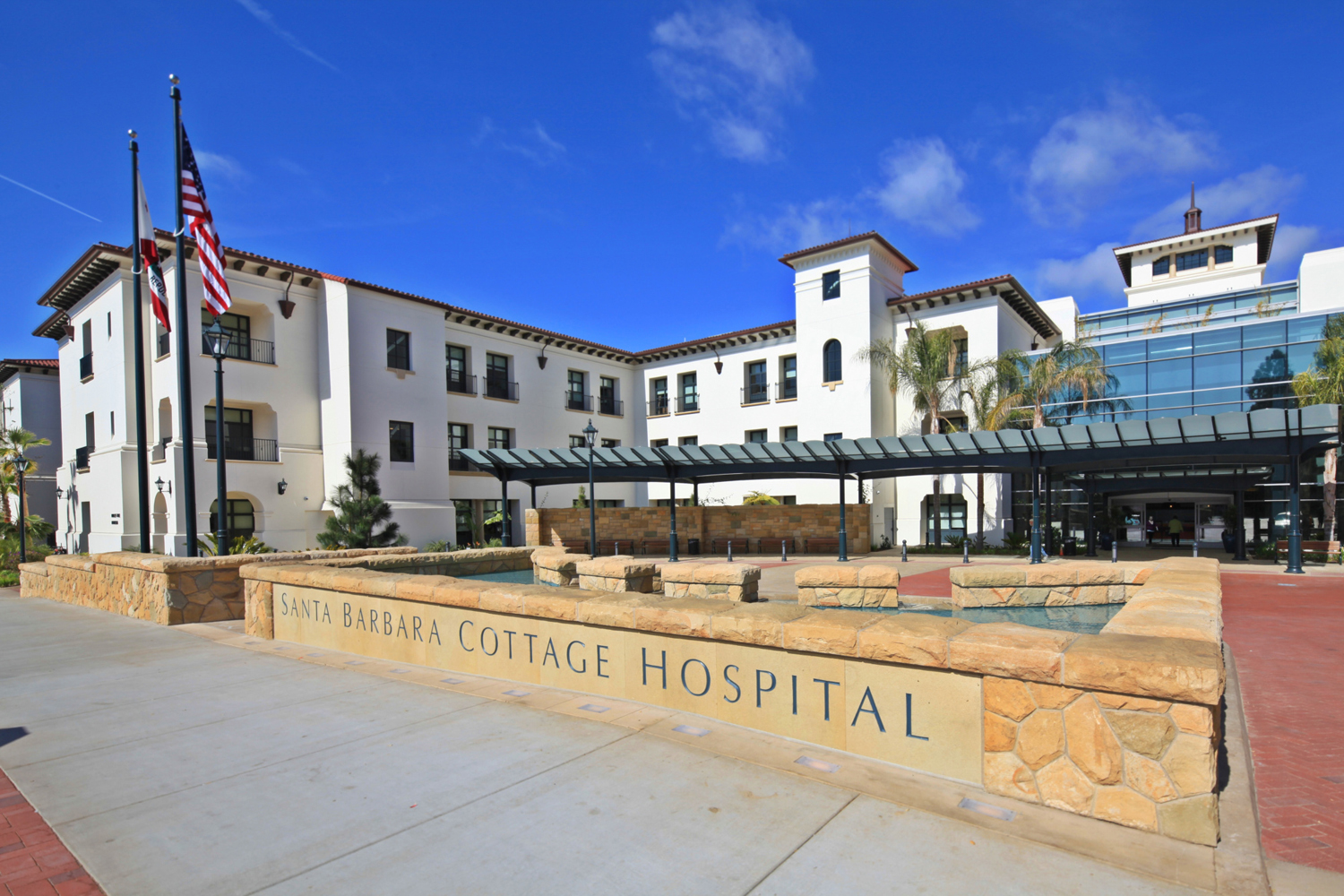McCarthy Building Companies Inc. has completed of Phase 4 construction of the Santa Barbara Cottage Hospital replacement project in Santa Barbara, Calif.
The $300 million project is part of a six-phased inpatient facility construction replacement program for Cottage Health System at the Santa Barbara Cottage Hospital site, totaling approximately $700 million and spanning 750,000-sf.
With grand opening ceremonies in January 2012 and patient move-in on February 12, the 370,000-sf project included construction of a diagnostic and treatment (D&T) pavilion and two, three-level patient pavilions with a basement and a new main entrance.
McCarthy also built a helipad for emergency air transportation atop the D&T Pavilion. Construction of the patient pavilions ensures the hospital’s compliance with Senate Bill 1953, which requires seismic upgrades for all acute care facilities before the 2013 deadline.
Prior to beginning Phase 4 work, McCarthy built a new 28,476-square-foot Energy Center, two parking structures for employees and visitors with space for approximately 1,133 vehicles, and a culvert around the hospital to protect the surrounding neighborhood by reducing flood risk. BD+C
Related Stories
| Sep 16, 2010
Gehry’s Santa Monica Place gets a wave of changes
Omniplan, in association with Jerde Partnership, created an updated design for Santa Monica Place, a shopping mall designed by Frank Gehry in 1980.
| Sep 16, 2010
Green recreation/wellness center targets physical, environmental health
The 151,000-sf recreation and wellness center at California State University’s Sacramento campus, called the WELL (for “wellness, education, leisure, lifestyle”), has a fitness center, café, indoor track, gymnasium, racquetball courts, educational and counseling space, the largest rock climbing wall in the CSU system.
| Sep 13, 2010
Community college police, parking structure targets LEED Platinum
The San Diego Community College District's $1.555 billion construction program continues with groundbreaking for a 6,000-sf police substation and an 828-space, four-story parking structure at San Diego Miramar College.
| Sep 13, 2010
Campus housing fosters community connection
A 600,000-sf complex on the University of Washington's Seattle campus will include four residence halls for 1,650 students and a 100-seat cafe, 8,000-sf grocery store, and conference center with 200-seat auditorium for both student and community use.
| Sep 13, 2010
Second Time Around
A Building Team preserves the historic facade of a Broadway theater en route to creating the first green playhouse on the Great White Way.
| Sep 13, 2010
Palos Community Hospital plans upgrades, expansion
A laboratory, pharmacy, critical care unit, perioperative services, and 192 new patient beds are part of Palos (Ill.) Community Hospital's 617,500-sf expansion and renovation.
| Sep 13, 2010
China's largest single-phase hospital planned for Shanghai
RTKL's Los Angles office is designing the Shanghai Changzheng New Pudong Hospital, which will be the largest new hospital built in China in a single phase.
| Sep 13, 2010
Richmond living/learning complex targets LEED Silver
The 162,000-sf living/learning complex includes a residence hall with 122 units for 459 students with a study center on the ground level and communal and study spaces on each of the residential levels. The project is targeting LEED Silver.















